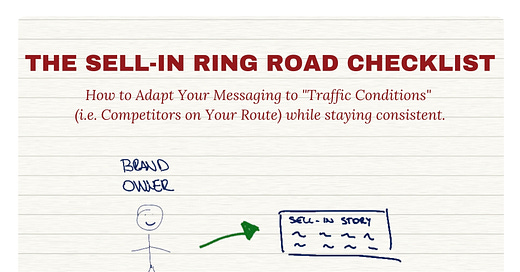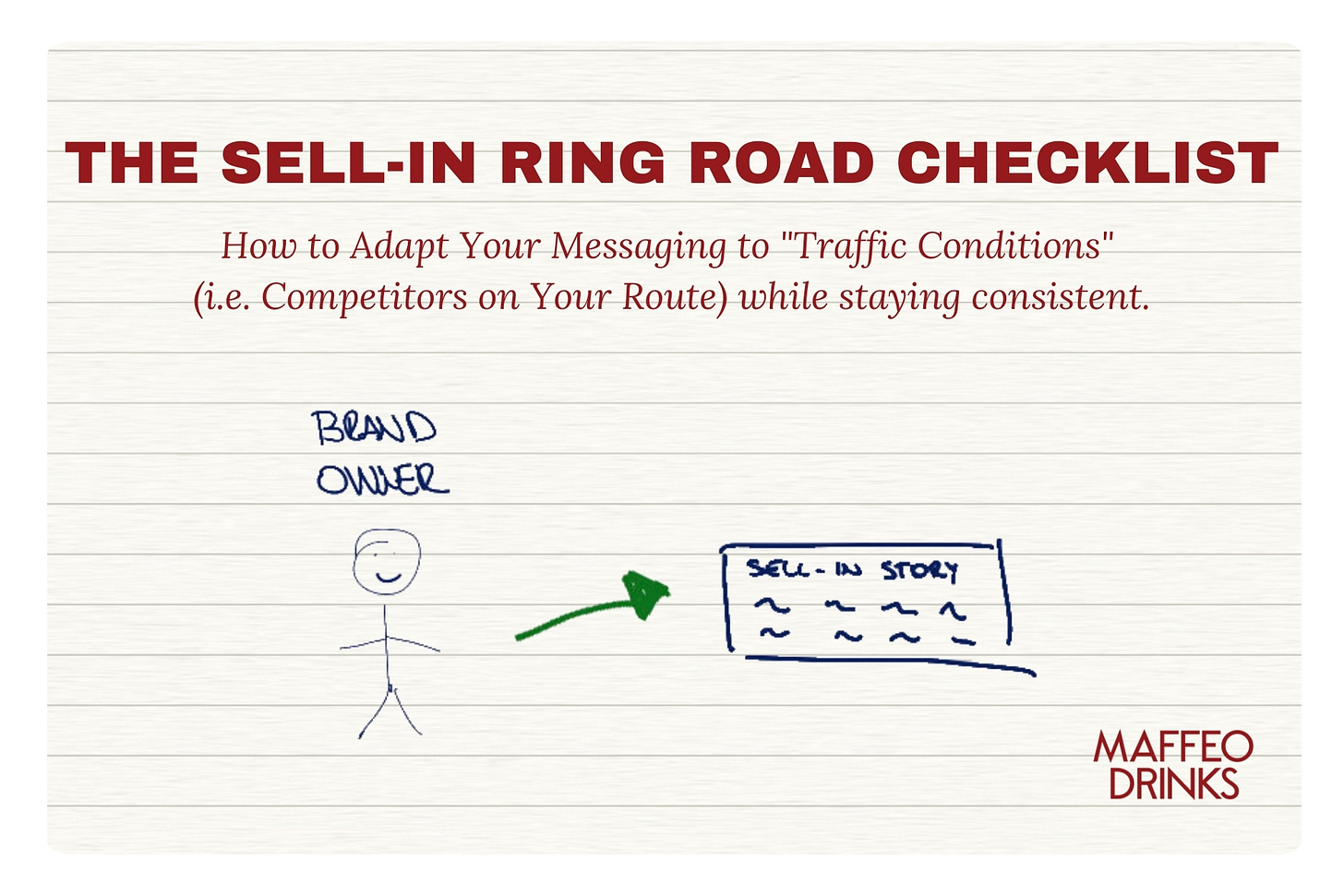The "Sell-in Ring Road" Checklist
How to Adapt Your Messaging to "Traffic Conditions" (i.e. Competitors on Your Route) While Staying Consistent.
Dear Bottom-up Drinks Builder,
In this Mini-Guide, I will discuss the importance of adapting your sell-in story to the listener. Most Drinks Builders have a standard top-down story they apply. They forget to listen, get input, and adjust their messaging, and that’s a pricey mistake as they fail to sell their first bottle.
Let’s be clear. This doesn’t mean telling them stuff to please them. It means selectively choosing from your Commercial Essence the traits that align with them.
According to the adage, all roads lead to Rome. Growing up in the Italian capital, I was used to knowing by heart all the old road arteries that the ancient Romans had built to get to the city center.
That inspired me to shape the concept of Sell-in Ring Road.
Ring Roads are not in every city. They are usually a European phenomenon as they mimic old city walls. When cities grew in size and defense walls became obsolete, they were generally demolished and substituted by a circular road.
Each road used to lead to one of the city’s doors, the city's entrance.
Many cities have concentric ring roads, depending on how they grew. Usually, the wider of them is a highway (motorway, speedway, autobahn, autostrada, or whatever you call it).
Now, Imagine you are coming from a highway, and you want to enter a city. You’re probably driving on that ring, and you must decide you must decide which exit to take to enter the city (no pun intended).
You don’t know which route is the best. You may think you know, but you haven’t considered some variables:
Traffic on your route. How many other brands are going there, too
Your destination may change. You know where your customer is now, but you don’t know where they wanna get (i.e., they may move during your conversation)
When explaining your brand and category, a sell-in story is a message you tell bar owners, bartenders, and buyers.
While it’s crucial to be consistent, it’s also important to know what to say to whom and to adapt how you convey that message.
I wrote a Mini-Guide about this:







